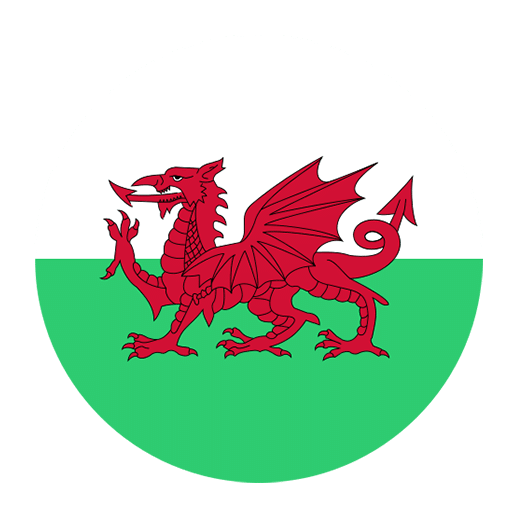Welsh is a language rich in history and culture, with its own unique set of vocabulary and grammatical rules. For English speakers learning Welsh, understanding the nuances between certain words can be challenging yet rewarding. Two such words that often cause confusion are “ffordd” and “fforderch.” Both can be loosely translated to mean “road” and “route” respectively, but their usages and connotations differ significantly. This article aims to clarify the differences between these two terms and provide practical examples to help learners use them correctly.
Understanding “Ffordd”
The Welsh word “ffordd” is most commonly translated to “road” in English. However, its application in the Welsh language goes beyond just the physical structure of a road. Here are some key aspects to understand about “ffordd”:
Literal Meaning
In its most straightforward usage, “ffordd” refers to a physical road or path. For example:
– “Mae’r ffordd yn arwain i’r pentref” (The road leads to the village).
– “Mae’r ffordd yn gul ac yn droellog” (The road is narrow and winding).
Metaphorical and Idiomatic Uses
“Ffordd” is also used metaphorically to represent a way or method of doing something. Much like the English word “way,” it can denote an approach or manner:
– “Mae gennych chi ffordd dda o egluro pethau” (You have a good way of explaining things).
– “Dyma’r ffordd i wneud e” (This is the way to do it).
Compound Forms
“Ffordd” often appears in compound words and phrases, broadening its meaning further. Some examples include:
– “Ffordd fawr” (main road)
– “Ffordd osgoi” (bypass)
– “Ffordd dwyreiniol” (eastern road)
Understanding “Fforderch”
On the other hand, “fforderch” is a term that is less commonly encountered but holds its own specific meaning. It is typically translated as “route,” and its usage is more specialized than “ffordd.”
Literal Meaning
“Fforderch” refers to a planned or designated route, often used in contexts such as travel, logistics, or navigation. For example:
– “Rydym yn dilyn y fforderch a argymhellir gan y llywodraeth” (We are following the route recommended by the government).
– “Mae’r fforderch yn mynd trwy dir ffermio” (The route goes through farmland).
Contextual Usage
While “ffordd” can be used broadly, “fforderch” is more context-specific. It is commonly used in situations where the precise path or direction is being discussed, often in planned or formal contexts:
– “Mae’r fforderch hwn yn cael ei ddefnyddio gan lorïau” (This route is used by lorries).
– “Mae’r fforderch newydd yn byrhau’r daith” (The new route shortens the journey).
Technical and Specialized Meanings
“Fforderch” is also used in technical or specialized fields, such as logistics, transportation planning, and outdoor activities like hiking:
– “Mae’r fforderch hwn yn rhan o’r cynllun trafnidiaeth” (This route is part of the transportation plan).
– “Rydym yn dilyn fforderch y llwybr” (We are following the trail route).
Comparing “Ffordd” and “Fforderch”
To fully understand the differences between “ffordd” and “fforderch,” it is helpful to compare them directly in various contexts.
Physical Road vs. Planned Route
The most apparent difference is that “ffordd” often refers to the physical road itself, while “fforderch” refers to the planned or designated route:
– “Mae’r ffordd hon wedi’i gwneud o darmac” (This road is made of tarmac).
– “Mae’r fforderch wedi’i farcio ar y map” (The route is marked on the map).
General vs. Specific Usage
“Ffordd” can be used in a variety of contexts, both literal and metaphorical, whereas “fforderch” is more specialized and context-specific:
– “Mae gan y wlad ffyrdd da” (The country has good roads).
– “Mae angen cynllunio’r fforderch yn ofalus” (The route needs to be planned carefully).
Idiomatic Expressions
“Ffordd” appears in more idiomatic expressions compared to “fforderch,” which is rarely used metaphorically:
– “Ar y ffordd” (On the way)
– “Ffordd o fyw” (Way of life)
Practical Examples and Exercises
To solidify your understanding of “ffordd” and “fforderch,” here are some practical examples and exercises.
Exercise 1: Fill in the Blanks
Choose the correct word, “ffordd” or “fforderch,” to complete the sentences:
1. Mae’r __________ yn arwain trwy’r coed.
2. Rydym wedi cynllunio’r __________ ar gyfer y daith.
3. Dyma’r __________ i’r stadiwm.
4. Mae gennym __________ newydd ar gyfer y cludiant.
Answers:
1. ffordd
2. fforderch
3. ffordd
4. fforderch
Exercise 2: Translation Practice
Translate the following sentences from English to Welsh, using “ffordd” or “fforderch” as appropriate:
1. The new route is shorter.
2. This road is very busy.
3. They have a unique way of doing things.
4. The route takes us through the mountains.
Answers:
1. Mae’r fforderch newydd yn fyrrach.
2. Mae’r ffordd hon yn brysur iawn.
3. Mae ganddyn nhw ffordd unigryw o wneud pethau.
4. Mae’r fforderch yn mynd â ni trwy’r mynyddoedd.
Exercise 3: Create Sentences
Create your own sentences using “ffordd” and “fforderch” to describe different scenarios. Try to use both literal and metaphorical meanings for “ffordd.”
Examples:
– “Mae’r ffordd hon yn arwain at y môr.”
– “Rydym wedi mapio’r fforderch i’r digwyddiad.”
Conclusion
Understanding the difference between “ffordd” and “fforderch” is an essential part of mastering Welsh vocabulary related to travel, transportation, and methods. While “ffordd” is more versatile and can be used in both literal and metaphorical contexts, “fforderch” is more specialized, referring specifically to planned or designated routes. By practicing the usage of these words in different contexts, you can gain a deeper understanding of their meanings and applications, enhancing your fluency in the Welsh language.
Remember, language learning is a journey, and understanding these nuances will help you navigate the beautiful linguistic landscape of Welsh more effectively. Happy learning!

